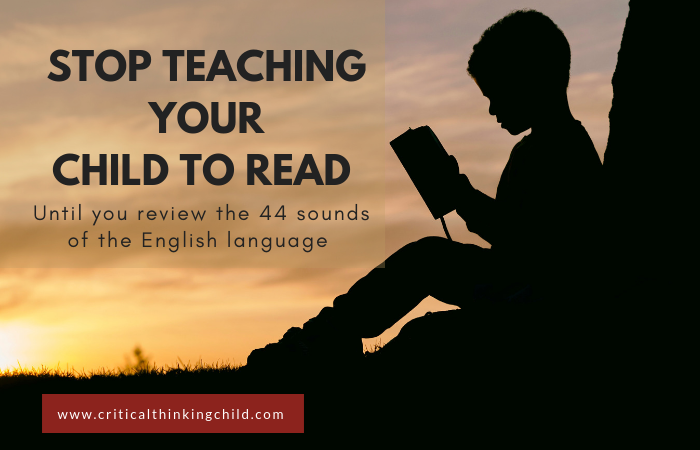It happens all the time, and with the best of intentions. A parent or teacher sits down with their preschooler, opens a book, and diligently begins to read aloud. Over time, through repetition and recognition, the preschooler begins to recite back the words. They’re learning to read.
Or are they?
Fast forward a few years and many of these same students begin to struggle. They falter when left to tackle the task of reading on their own, and more complex texts elude them.
We’ve always been told reading to children early and often is a key to literary success later in life. And yet, students continue to struggle.
Why?
The 44 sounds of the English language
Children are astute when it comes to mimicry. They are experts at listening and then parroting back what they hear. Mimicry, however, does not equate to understanding.
Before children begin to understand entire words, they must understand the sounds used to create those words. There are approximately 44 sounds, called phonemes, that make up the entirety of the English language.
Every individual word, no matter how small or how complex, is comprised of these phonemes.
Do you know your phonemes?
If not, it’s okay. You may have never been taught English phonemes in isolation. Instead, you picked them up over time, as you learned to read and write. Odds are, you were far more focused on trying to remember how a word was spelled than the phonemes attached to it.
Take, for example, the sound /f/, as in “fish”. The same exact sound is made at the beginning of the word “phone”. In the second case, the /f/ sound is represented by the letters “ph”. A child is likely more concerned with remembering how to correctly spell phone than remembering that /f/ is an isolated sound – or phoneme.
To make matters more complex, if English is not your first language, you may have learned an entirely different set of phonemes. For example, in many languages, such as Hindi, Russian, and Serbo-Croatian, the /w/ sound (as heard in the words “weather” and “what”) does not exist.
Regardless of your current understanding of phonemes, it’s important to take time to relearn them. This knowledge will not only help you with your own understanding of English, but will give you the background you need to approach literacy in a more refined way.
Focus on teaching phonemes first
Once you’re confident with your own understanding of phonemes, take it to the classroom. By teaching phonemes first, you are laying the foundation for a deep understanding of how the English language functions.
In mastering the 44 phonemes of the English language, children are not being taught to simply parrot the letters they see. Rather, they are learning about the relationship between sounds and the 26 letters that represent them. As a result, they can think critically about the words they see.
Even when teaching sight words, background knowledge about phonemes will help them understand exactly what it is they are reading. Later on, they can apply this knowledge to more complex words, becoming a better reader overall.
Literacy is only 44 sounds away
Learning to identify phonemes of the English language is an important stepping stone to literacy. If you want to help your preschooler succeed, the answer cannot be found in simple sight reading and repetition. True understanding and critical thinking comes from a deeper knowledge of each individual component that creates the English language.
Are you ready to master the 44 phonemes?



